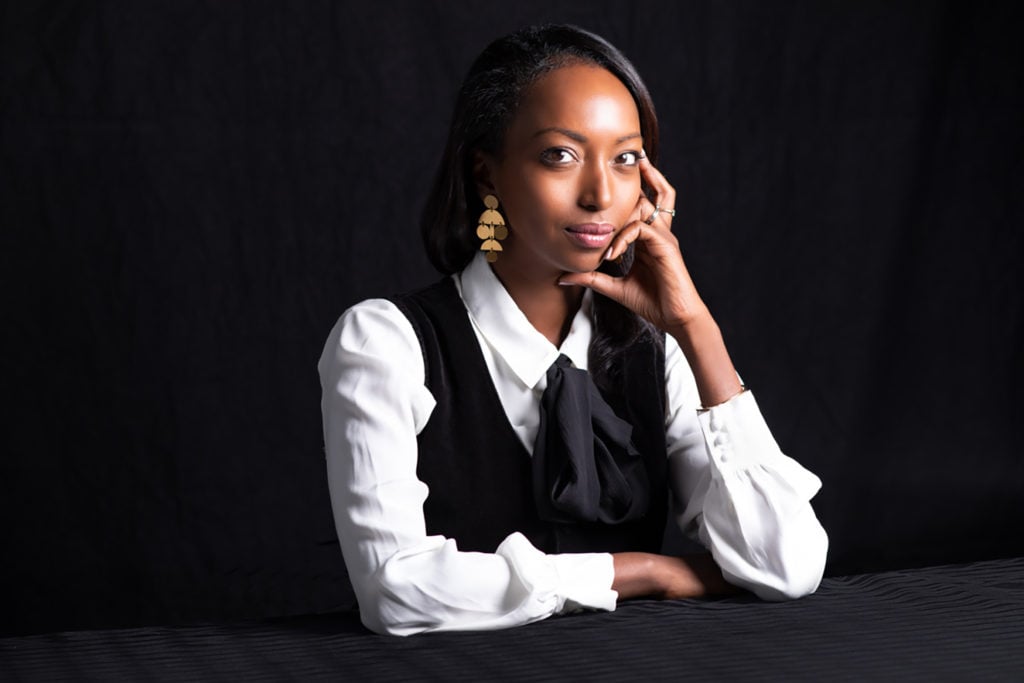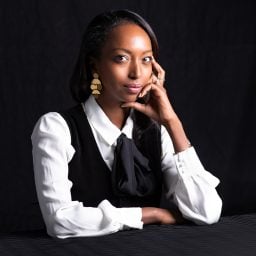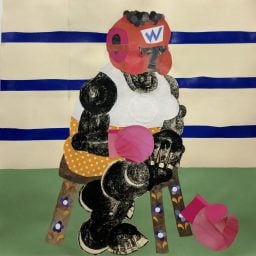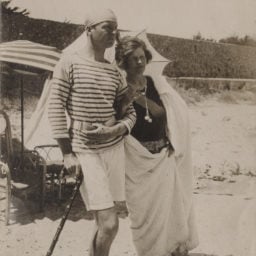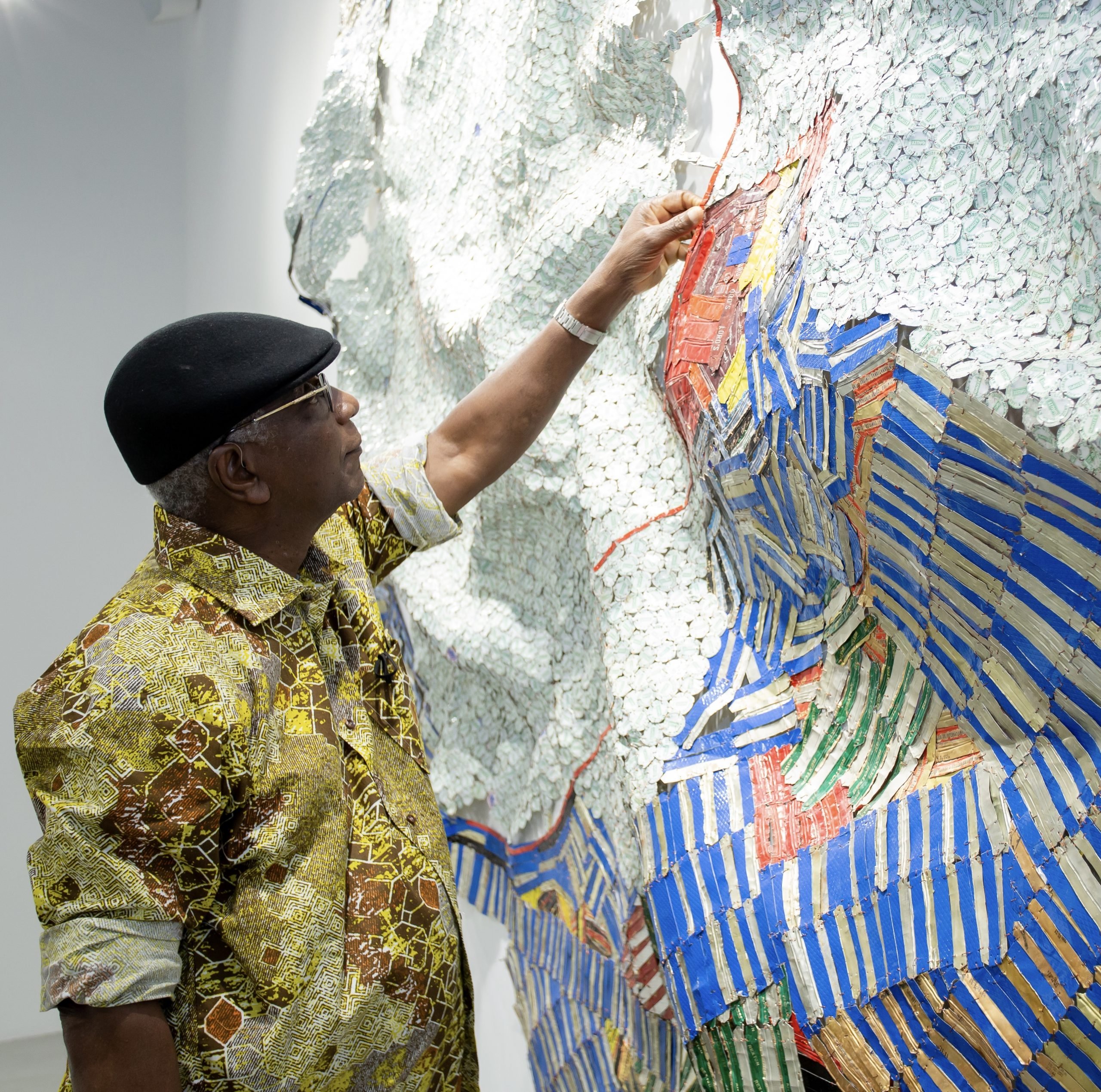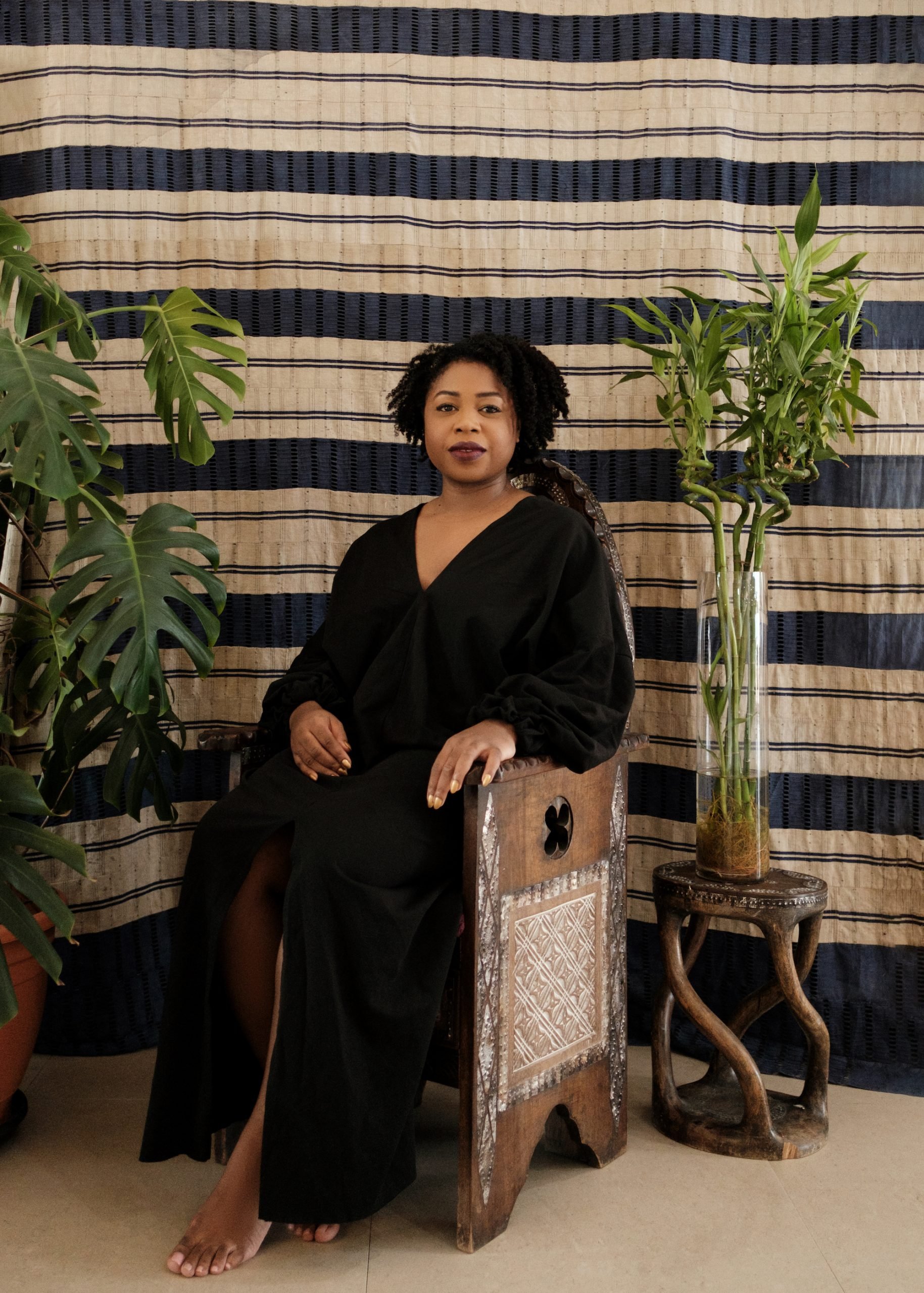Mariane Ibrahim does not fear change. Roughly seven years after founding her namesake gallery in Seattle, Ibrahim and her program officially begin their next act in Chicago this Friday, September 20, during the latest edition of Expo Chicago. Her new 5,000 square-foot space in the city’s West Town neighborhood effectively doubles the square footage of her gallery in the Pacific Northwest, while her presence further strengthens the Windy City’s increasingly influential standing in the international art market.
But like several gallerists who have gone on to great success, Ibrahim didn’t grow up dreaming of a career as an art dealer. She was born in Nouméa, the capital city of the French territory of New Caledonia, about 1,000 miles northeast of Brisbane, Australia. Her family moved to Somalia, where both her parents grew up, when she was five years old, then relocated to France three years later. Her early transitions through so many different cultures gave Ibrahim a keen understanding of how layered identity can be.
“I usually avoid the question, ‘where are you from?’, because what does that mean anymore, to be ‘from’ a place?” she mused to artnet News in the lead-up to her Chicago unveiling.
Today, Ibrahim’s program compels her to act as something of an ambassador for nuance and complexity in an art world still prone to generalization. While several of the emerging artists she represents hail from African countries or are members of the African diaspora, Ibrahim emphasizes that they—and by extension, her gallery—have much more to offer than simplistic regional or heritage-based labels could ever contain.
“I don’t see artists as ‘African artists.’ That’s why I’m comfortable speaking on their behalf,” she says. “It’s a big continent. It has influenced the entire world in art, music, history, performance, and dance.” To condense such a rich variety of nations, cultures, and traditions into a handful of identity-based descriptors would be “very dangerous and opportunistic.”
Challenging as these conversations are, Ibrahim says she is excited to have the opportunity to push them forward—especially during a period when so many art institutions and collectors are finally beginning to admit how narrow their purview has been.

Architectural rendering of the new Mariane Ibrahim Gallery in Chicago. Courtesy of Mariane Ibrahim Gallery.
The Long and Winding Road
After studying in the UK and Canada, Ibrahim moved to Paris to begin a career in marketing and advertising. She also briefly flirted with the prospect of becoming a fine-art photographer before pivoting into collecting what she deems “small” works of contemporary art in the mid-2000s.
Looking back, she sees her photography and her collecting as complementary expressions of a central passion, the same one that eventually compelled her to launch her gallery: to correct the lack of representation of the many artists of Africa and beyond.
She mentions the Malian photographer Malick Sidibé, best known for his arresting black-and-white portraits of proud, stylish everyday citizens in Bamako in the 1960s, as an early inspiration.
“When my mom was a young woman, she and her sisters would take film stills like that,” Ibrahim recalls. “But [Sidibé’s] photos have a little twist. They have composition, layers. His works were performances.” Ibrahim wanted more art with such vision and energy, but in Paris, she collided with the same obstacle again and again.
“Whenever I was enthusiastic about it, I’d always receive the same answer: ‘oh, we don’t have a market,’” she says. Although this stance frustrated her as a viewer and buyer, it was “music to [her] ears” as a marketer and advertiser. To do something truly game-changing, she knew, “you have to create the market.”
Ibrahim and her husband moved to Seattle in 2010, but it would take another two years before she opened her gallery there. When she did, the endeavor was mission-driven. “It has never been about making money,” she says. “For me and many other people, there cannot be any civilization without art. It is your third eye.” She now sees her vocation as a dealer as a result of “destiny” because of how it unites different aspects of her life: her experience moving between different cultures, her skills as a marketer, her passion for contemporary art, and her belief in the way that images can enrich and expand lives.
“Anybody can open a gallery,” she says. “It matters how you build it… How do you stay consistent, relevant, and creative? How do you keep the trust of your artists? How do you excite them?”
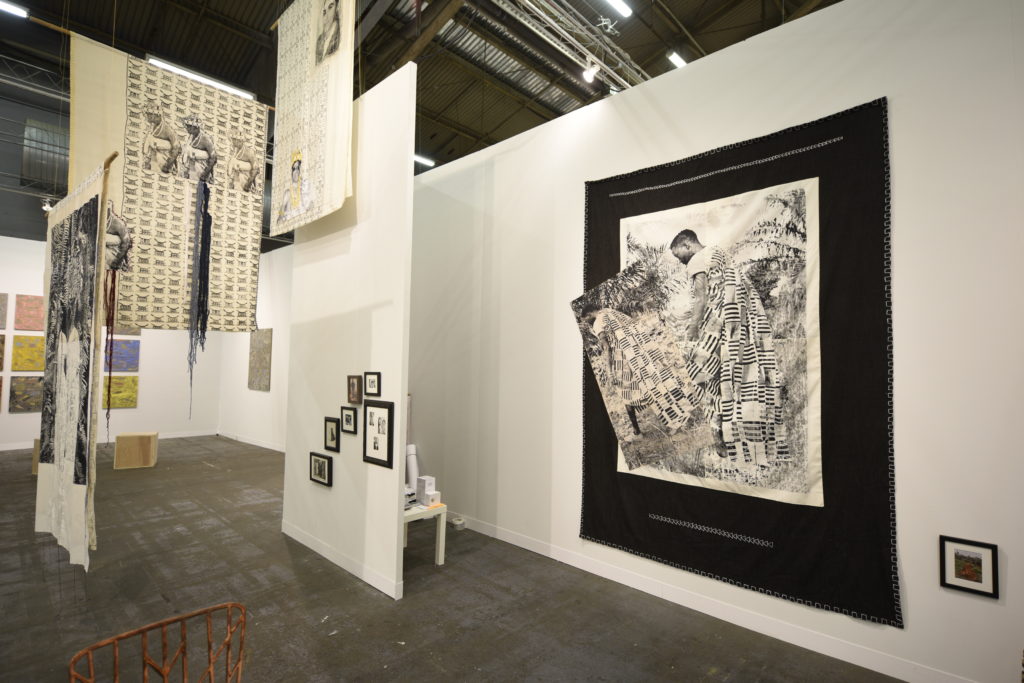
Mariane Ibrahim Gallery’s booth, “Unraveled Threads,” featuring the work of Zohra Opoku, won the Armory Show’s inaugural Presents Booth Prize. Courtesy of Teddy Wolff/the Armory Show.
Community Development
The original location of Mariane Ibrahim Gallery made answering these questions especially challenging. Because of Seattle’s position outside the traditional network of international art capitals, Ibrahim relied on travel and other forms of outreach to painstakingly build a community of like-minded collectors, curators, artists, and other dealers.
A central plank in her strategy was to exhibit far and wide on the art-fair circuit, where she frequently sought to curate stands that made statements. At the Seattle Art Fair in 2016, her booth featured artist Clay Apenouvon’s installation Film Noir (2016), which involved draping the booth’s exterior in faux film strips made from black trash bags sliced into long ribbons. By design, the work partially hid other works on view inside as a comment on how artists of African heritage have historically been treated as invisible by the art establishment. The following March, Ibrahim won the first Armory Show Presents Booth Prize for a stand centered on Zohra Opoku, whose work was literally sewed together from photographs and fabric belonging to her family members from around the world.
Fellow Chicago dealer Monique Meloche recalls her reaction to Ibrahim’s Armory stand as being simply, “who is this woman with this fantastic program?” Later, Ibrahim consciously embraced collaborations with like-minded dealers as her profile rose.
Most notably, Sean Kelly approached her at a fair in 2017 to express his admiration for her booth. The conversation eventually turned to what Ibrahim called her “dream exhibition”: a survey of textile-based works by contemporary artists from nations across Africa, capturing the breadth and depth of the ways cloth informs ideas around geography, politics, and gender.
A few days later, Kelly came back to Ibrahim. “He said, ‘Let’s do your dream show at [my] gallery.’” The end result became “Ravelled Threads,” organized by Ibrahim and presented at Kelly’s main New York space last summer. The project reinforced her belief that mutually beneficial partnerships are the best path forward. “You can’t be successful if you don’t collaborate,” she says.
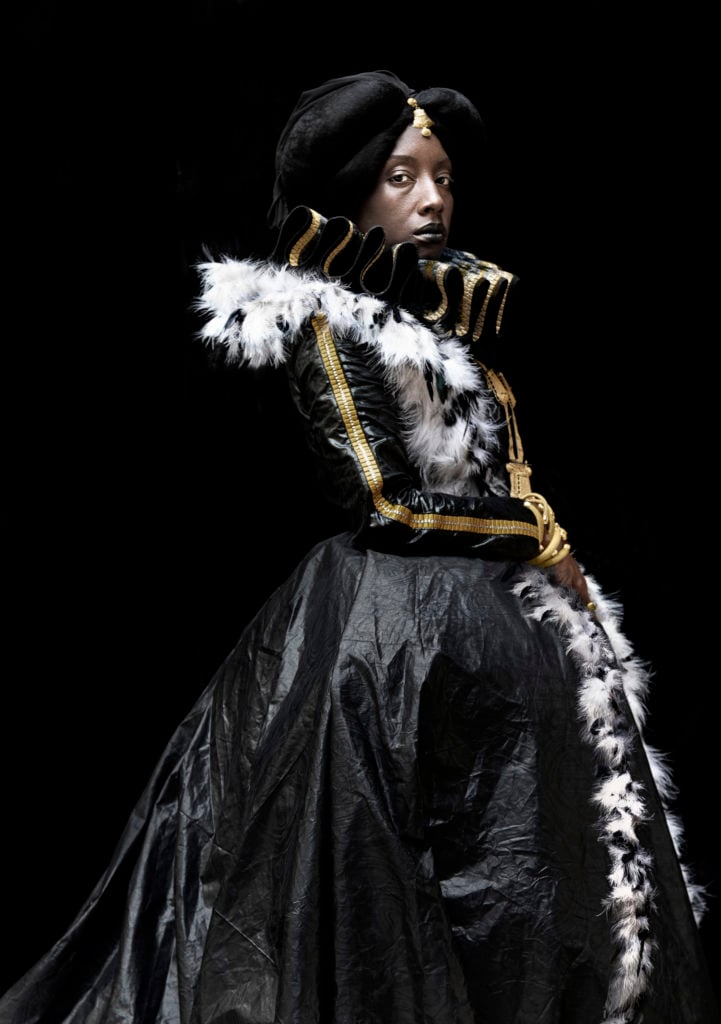
Ayana V. Jackson, Sea Lion (2019). Courtesy of Mariane Ibrahim Gallery.
A Second Act in the Second City
Still, even collaboration has its limits. As she approached her seventh year in Seattle, Ibrahim concluded that the only way for the gallery to grow properly was to relocate. The question was to where.
Ibrahim says she seriously considered Los Angeles and Mexico City, where she had excellent experiences as an exhibitor at Zona Maco. New York also entered her mind—but only for “half a second,” she says. She simply didn’t believe the physical spaces or neighborhoods of New York were the right fit.
Then there was Chicago. Although Ibrahim had never lived there, she says her decision to move to the US was “partially connected to” the election of Barack Obama, who adopted Chicago as his home.“I was motivated to see a new America,” Ibrahim says. So powerful was the kinship she felt with the 44th President that her gallery branding uses the same font as Obama’s campaign messaging.
Symbolism aside, Ibrahim ultimately chose Chicago for its unique combination of advantages. “When you come from Europe, Chicago is the epitome of an American capital,” she says, citing the Windy City’s diversity, progressive politics, and rich cultural history. (According to estimates by the US Census Bureau, Chicago has been majority-minority since July 2018, and it remains the country’s third-largest metropolis by population.) Chicago’s status as a major domestic and international travel hub only advances its case, making it easily accessible to collectors and artists in Ibrahim’s international network.
And that network is now local, as well. Ibrahim’s gallery is not only immediately next door to Monique Meloche (“I could drill a hole in the wall and we could pass each other notes,” Ibrahim jokes); it’s also only a short walk away from Corbett vs. Dempsey, the Gray Warehouse (which exhibits the contemporary program of blue-chip dealer Richard Gray), and Chicago stalwart Rhona Hoffman, among others. Slightly over a mile further (albeit in opposite directions) are the highly respected Kavi Gupta and fast-rising Patron galleries, to name just a few.
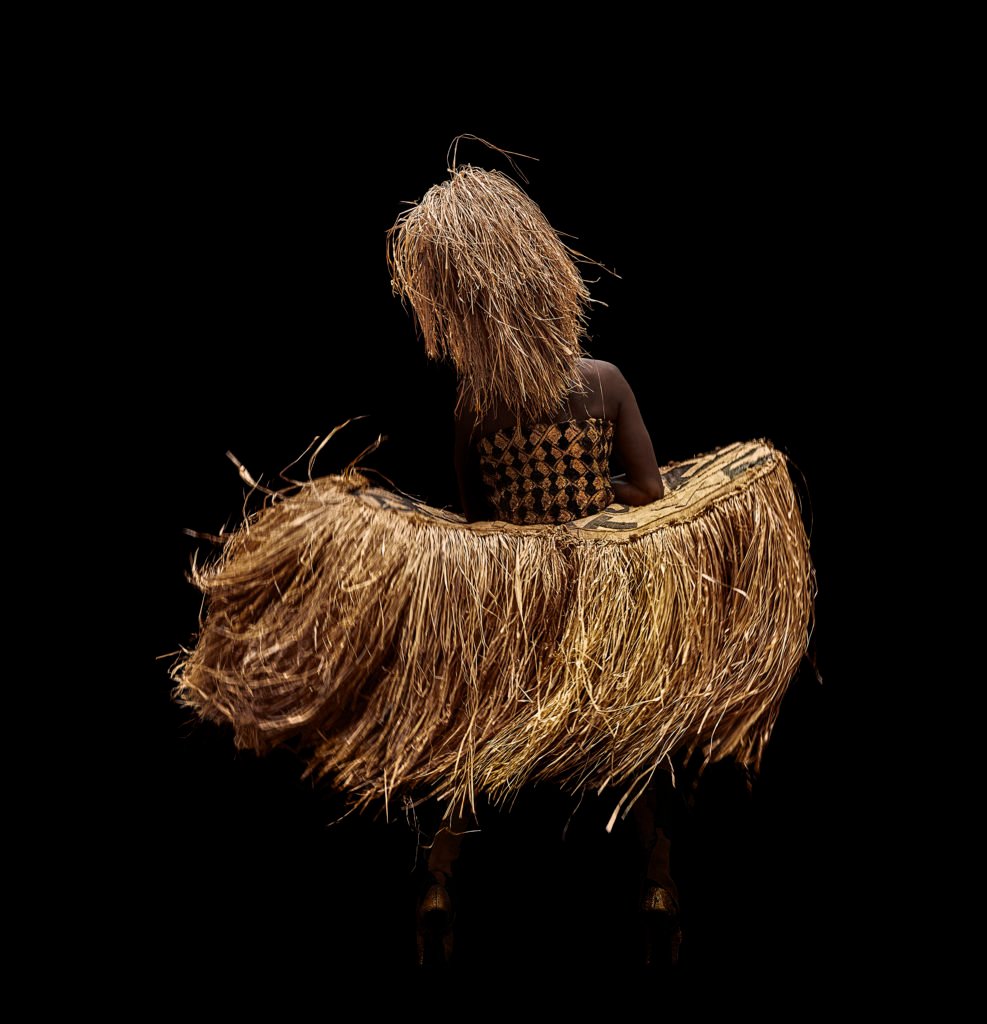
Ayana V. Jackson, The Self-forgetfulness of Belonging Would Never Be Mine (2019). Courtesy of Mariane Ibrahim Gallery.
Setting a Tone for the Gallery
Ibrahim’s inaugural exhibition will be Ayana V. Jackson’s “Take Me to the Water,” a survey of the artist’s work interrogating two centuries of colonialism in photography. Jackson will also unveil a new body of work embedded in the mythologies and speculative fictions of Africa and the African diaspora. The show takes its title from the latter works, which are large-format photographs depicting “aqua-humanoids” embodied by Jackson and derived from tales of water spirits, such as those connected to women thrown overboard from transatlantic slave ships.
Ibrahim says she thought of the “unbelievably talented” Jackson immediately when it came to decide her first Chicago show. “It had to be a female artist, and also a black American artist to add a layer of responsibility [to] themes of identity, displacement, and the roots of American capitalism,” she says. “This is work that is going to inform the direction of the gallery.”
In their third solo exhibition together, Jackson credits Ibrahim for her ability to walk the fine line that great dealers walk. “Mariane enjoys being privy to my process of making the work, but does not insert herself. I think she intuitively understands how her artists work,” Jackson wrote in an email. “It’s a delicate dance and she has the right rhythm.” And with a 10-year lease on her new gallery and nearly a decade of hard-won momentum behind her, there’s no telling how much ground Ibrahim will eventually cover.
Follow Artnet News on Facebook:
Want to stay ahead of the art world? Subscribe to our newsletter to get the breaking news, eye-opening interviews, and incisive critical takes that drive the conversation forward.
